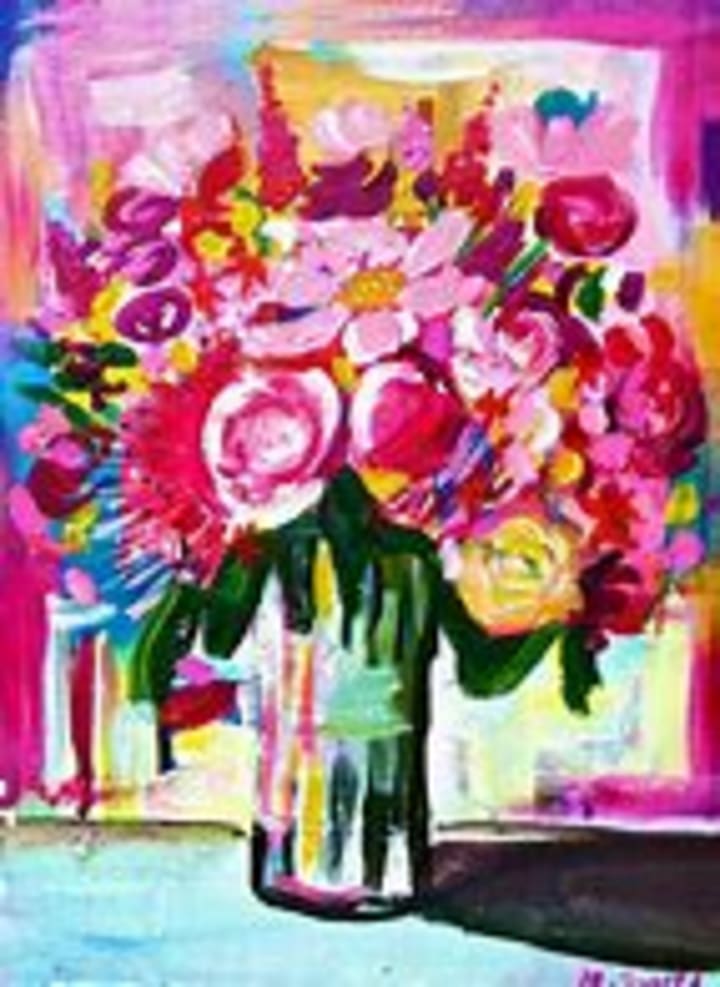Colour Therapy
scientific realms to have a therapeutic impact of colour

The first pigment of colour was invented by artist’s as early as 40,000 years ago, creating a basic palette of five colours: red, yellow, brown, black, and white. The history of colour, has since become a perpetual discovery of exploration and scientific advancement. Novel pigments have accompanied the development of art history’s greatest movements from the Renaissance to Impressionism (Gottesman, 2016). Today colour is accepted as a potent therapeutic agent with therapeutic powers for rapid healing. Recent breakthroughs in the use of visual brain stimulation by colour in the method of Emotional Transformation Therapy report rapid recovery of trauma, depression, physical pain and spiritual blockages (Vazquez, p.192). Furthermore, Chromotherapy exemplifies a significant development of science in the field of electromagnetic radiation/energy (Azeemi & Raza, 2005).

While artists revel in the impact of colour, colour therapy is recognised in the scientific realms to have a therapeutic impact of colour. Sir Isaac Newton 1665, introduced the use of a prism to reveal sunlight (white light) composed of a combination of numerous colours, discovering a new understanding of the nature of colour (Vazquez, p.192). Newton postulated light to be composed of particles or what he called corpuscles. This viewpoint possessed an objectification of light and colour as substances that were separated and external to the human subjective experience. Whereas, Wolfgang von Goethe, early 1700s protested Newton's theory, with beliefs that colour and light combines the subjective emotional and spiritual aspects of colour that articulates colour, seen as an internal part of human experience (Vazquez, 192).

Vazquez proposes a new ‘process colour theory’ to focus on the instant process of the interaction between colour and human consciousness. Emotional Transformation Therapy uses specific relational guidance in conjunct with the process colour theory. Research in both physics and psychology factor; length of view time, brightness, saturation, visual depth perception, angle of view, hue, strobe emission and the emotive state of the patient at viewing to elaborate critical issues that amplify therapeutic effects (Vazquez, p.192). When exploring neurophysiological responses to colour most people are not aware of the transduction of coloured light from into the eyes and brain, to specific emotion-based neural networks and specific bodily vicinities (Vazquez, p.195). These neural pathways are initiated by light stimulation into the eyes, to the brain and throughout the nervous system. One route refers to the retinal-hypothalamic pathway, however, light also travels through microtubules, and quantum non-local principles to explain other phenomena of the effects of light transduction. As an example, red-orange light stimulus enters the eyes and transduced rapidly to the physical extremities. Therefore, if a change in those physical regions is needed the use of red-orange activates with numerous means of dispensation to powerful physical symptom variations (Vazquez, p.195).

Chromatherapy has been around since ancient times. The therapeutic aspect, is used to balance a person’s healing energies, whereby emotional, spiritual, physical, or mental problem. Whereas, the scientific approach, Chromotherapy is a method of treatment that uses the visible spectrum (colours) of electromagnetic radiation to cure diseases. Azeemi and Raza, (2005) illustrates the field of electromagnetic radiation/energy is very helpful in discovering new dimensions to old theory. The wavelength, frequency and quantity of energy of every colourful ray are fixed for each colour, that is, specific wavelength, frequency and amount of energy in the wave denominates the distinct colour (Azeemi & Raza, 2005). The human eye is sensitive to electromagnetic radiation only at wavelengths approximates between 380 and 780 nm. Azeemi and Raza, (2005) offer these small segments, called the visible spectrum or visible light can be broken down into numerous electromagnetic frequencies, and frequency related to the colour of the rainbow: red, orange, yellow, green, blue, indigo, violet and all vibrations.

Research on colour variation and effect enlighten, bright white full-spectrum light is useful for treatment of cancers, SAD (seasonal affective disorder, so-called winter depression), anorexia, bulimia nervosa, insomnia, jetlag, shift working, alcohol and drug dependency, and for reductions levels of medication. Blue light is more predominate in healing injured tissue and preventing scar tissue, as well for burns and lung conditions. Blue light colour is also emitted for treatment in a variety of psychological problems, including addictions, eating disorders and depression (Azeemi & Raza, 2005). Red light has effective results in treating cancer and constipation and in healing wounds (Azeemi & Raza, 2005). Interestingly pink light produces more tranquil and calming effects, within minutes of exposure to suppress hostile, aggressive and anxious behaviour. In contrast, yellow is highly stimulating, with suggestions of possible links between violent street crime and yellow street lighting (Azeemi & Raza, 2005). Elliot, (2015) evidence based research on colour and selective attention explain, red stimuli helps attentional advantage. Whereas, colour and alertness shows blue light increases subjective alertness and performance on attention-based tasks.

Russian Research from 1960s on colour, brain and the effects of Light edify hormones melatonin and serotonin, both are produced by the pineal gland in the brain. Melatonin is a crucial chemical pathway respondent to light that synchronizes bodily functioning with diurnal and seasonal variations. Serotonin is a neurotransmitter produced in the brain, whose action links with mental disturbances such as schizophrenia and hallucinogenic states. Serotonin, a stimulant, is produced during daylight whereas the output of melatonin is linked by sleep with increases when it is dark and emits depressive effects (Azeemi & Raza, 2005).

In theorizing colour, both physical and psychological context in which colour is perceived is thought to influence its meaning. That is colour therapy can produce systematic physiological reactions that either manifest emotional experiences, cognitive orientation, and overt action (Elliot, 2015). Furthermore, colour today is widely accepted as a therapeutic tool with various medical applications (Azeemi & Raza, 2005).
References
Azeemi, S, T., & Raza, S.M. (2005). A critical analysis of Chromotherapy and Its scientific evolution. Evid Based Complement Alternat Med, 2(4), 481–488. doi: 10.1093/ecam/neh137
Elliot, A.J. (2015). Color and psychological functioning: a review of theoretical and empirical work. Front Psychol, 6. 368. doi: 10.3389/fpsyg.2015.00368
Gottesman, S. (2016). A brief history of color in art. Retrieved from https://www.artsy.net/article/the-art-genome-project-a-brief-history-of-color-in-art
Theory of Colours, (2019). Retrieved from https://mitpress.mit.edu/books/theory-colours
Vazquez, R.S. Color: Its therapeutic power for rapid healing. Subtle Energies & Energy Medicine, 17 (2), 191-195.
About the Creator
Shanie Walker
Shanie Walker is a Holistic Behavioural Therapist, awards, and honours in Art Therapy, Dialectic and CBT. Shanie is a Psychologist and Registered Professional Hypnotherapist. Accredited Nutritionist, and Master Degree in Fitness.






Comments
There are no comments for this story
Be the first to respond and start the conversation.